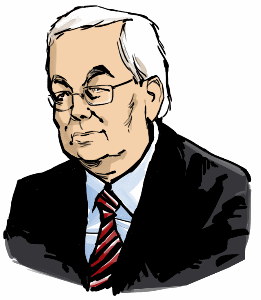© Gunnar Tómasson
14 October 2015
Facebook Dialogue on Plato
October 14, 2015
Eyjólfur Kjalar Emilsson
Icelandic philosopher
Confession: I know I am a Platonist but I am unsure if it is the Cartesian or the Leibnizian variety. (It goes without saying it is largely Plotinian–Plotinus understood Plato better than anyone.) This is just an announcement, I will not defend these views here against protests, unless, of course, I feel I have nothing better to do, which is unlikely.
Yours truly
Icelandic economist
You are in good company, Eyjólfur. If Western philosophy consists of footnotes to Plato, then a (mostly) unheralded foundational aspect thereof is the Platonic concept of World Soul. In a „Pythagorean“ tradition of number symbolic Creation Myth what is known as the conventional or traditional construction thereof has a numerical value (105113). In the closing lines of Timaeus, Plato writes that the subject matter thereof is not destined to be an eternal puzzle or words to that effect.
Einar Pálsson
Platonic Brennu-Njálssaga
68263
Five Platonic Solids
11110 = Jörð-Vatn-Loft-Eldr-Tími [Earth-Water-Air-Fire-Time]
14943 = Mörðr-Helgi-Grímr-Skarpheðinn-Kári [Evil-Three Sons of Burnt Njáll-Time]
Sacred Pythagorean Triangle of Pagan Iceland
7196 = Bergþórshváll
6067 = Miðeyjarhólmr
3027 = Helgafell
ONE Circle of Equinoctial Points
25920 = Platonic Great Year
68263
Karen Armstrong
A History of God
The most influential Kabbalistic text was The Zohar, which was probably written in about 1275 by the Spanish mystic Moses of Leon. As a young man, he had studied Maimonides but had gradually felt that attraction of mysticism and the esoteric tradition of Kabbalah. The Zohar (The Book of Splendour) is a sort of mystical novel, which depicts the third-century Talmudist Simeon ben Yohai wandering around Palestine with his son Eliezar, talking to his disciples about God, nature and human life. There is no clear structure and no systematic development of theme or ideas. Such an approach would be alien to the spirit of The Zohar, whose God resists any neat system of thought. Like Ibn-al-Arabi, Moses of Leon believed that God gives each mystic a unique and personal revelation, so there is no limit to the way the Torah can be interpreted: as the Kabbalist progresses, layer upon layer of significance is revealed. The Zohar shows the mysterious emanation of the ten sefiroth as a process whereby the impersonal En Sof becomes a personality. In the three highest sefiroth – Kether, Hokhmah and Binah – when, as it were, En Sof has only just „decided“ to express himself, the divine reality is called „he.“ As „he“ descends through the middle sefiroth – Hesed, Din, Tifereth, Netsakh, Hod and Yesod – „he“ becomes „you.“ Finally, when God becomes present in the world in the Shekinah, „he“ calls himself „I.“ It is at this point, where God has, as it were, become an individual and his self-expression is complete, that man can begin his mystical journey. Once the mystic has acquired an understanding of his own deepest self, he becomes aware of the Presence of God within him and can then ascend to the more impersonal higher spheres, transcending the limits of personality and egotism. It is a return to the unimaginable Source of our being and the hidden world of sense impression is simply the last and outer-most shell of the divine reality. (Karen Armstrong, A History of God, Ballantine Books, New York, 1993, p. 247)“
Ten Sefiroth of Kabbalah
35850
2638 = En Sof (Without End)
3025 = Kether (Crown)
2852 = Hokhmah (Wisdom)
1559 – Binah (Intelligence)
1953 – Hesed (Love or Mercy)
1219 = Din (Power)
4209 = Tifereth (Beauty)
3301 = a.k.a. Rakhamim (Compassion)
3514 = Netsakh (Lasting Endurance)
1261 = Hod (Majesty)
2434 = Yesod (Foundation)
3816 – Malkuth (Kingdom)
3391 = a.k.a. Shekinah
677 = Ek („I“ – Anonymous Author of Brennu-Njálssaga)
35850
Advent of Christianity
1000 A.D.
As in 68263 + 35850 + 1000 = 105113
***
Calculator for converting letters to cipher values is at:
http://www.light-of-truth.com/ciphersaga.htm

 Gunnar Tómasson
Gunnar Tómasson